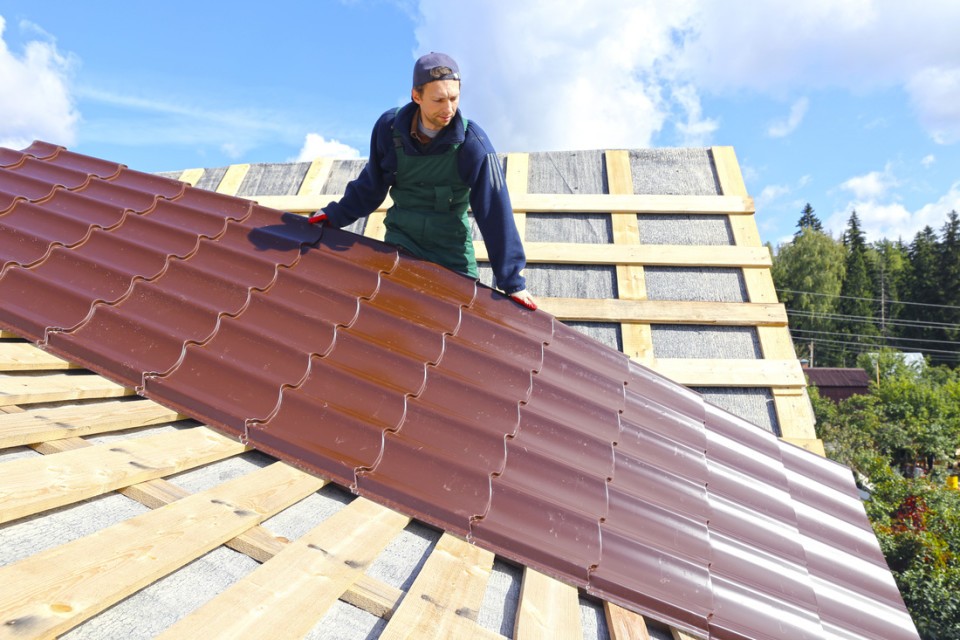Installing a metal roof can be a complicated process that may include a variety of challenges. For instance, some installations may require temporary attachment of roof panels to the substructure. Before installing the roof, make sure that all the fixtures and other elements are secure and protected. Additionally, it is important to avoid stepping on unattached roof panels. A metal roof installation professional can provide you with advice on the best way to install your roof.
When installing a metal roof, you will need to install flashing and trim to complete the process. The first trim piece is called eave trim. It finishes off the low sides of your home and directs water away from it. Adding trim to your roof will also help prevent water seeping into your home. Regardless of which metal roofing material you choose, you will need to install flashing and trim to complete the installation.
Another benefit of hiring a professional to install your new metal roof is the warranty. A contractor will have workers’ compensation insurance, general liability insurance, and other coverages. If you were to fall on your roof, you could suffer an injury that could cost you tens of thousands of dollars. Similarly, a metal roof installation by a DIYer can void your existing warranty and make your roof susceptible to leaks. Hiring a professional is the best way to protect yourself from these risks and ensure the roof will last for decades to come.
Before installing metal roofing on your home, be sure that the roof installation process is done correctly. Ensure that the metal roofing installation team has proper training and experience. The best installers will know how to install the metal roof properly. Besides being knowledgeable and experienced, they will also use the proper tools to perform the work. Moreover, they will be able to inspect the details of the roof. While installing the roof, it is important to take the time to examine the details. If you notice that the valleys of the roof are not properly anchored, you should consider this possibility.
As with all installations, a metal roof installation can go wrong if you don’t know how to do it. While it may be an exciting project, it is also important to get it done correctly. Beginners tend to be overzealous with metal screws and overlap the panels, failing to take the wind resistance, drainage, and vents into consideration when installing the metal. A professional can make the process seamless for your home. The roof will not only look beautiful, but will last for decades.
Before installing a metal roof, it is vital to understand the basics of installation. This article will guide you through the process step-by-step. Once you have completed the preparation phase, you will be ready to install your metal roof. It is also important to understand how the screws are installed. If the screws aren’t properly inserted, they may cause leaks and other problems. So, make sure that your installation professional has the proper tools to complete the job properly.
Besides the installation process, you will need to remove the old roof. It can add up to $1,500 to the project. The cost of installing a metal roof is dependent on the panel profile. A square foot of metal panels can cost anywhere from $3.50 to $6.50. Metal shingles cost between $5 and $14 per square foot. If you choose a metal roof, you will also need to pay for any optional accessories like gutters, skylights, and solar panels.
When installing a new metal roof, you will need to make sure that you have the proper tools for the job. A metal roofing installation contractor can provide all the tools you need to install your new roof, but you should still have a contract with specific details. The contract should state the cost of all materials, warranty coverage, and how the roofer charges for labor. You should ask the installer for clarification on any clauses that are unclear or unsuitable. For example, a contract should include a clause about equipment malfunctions or unexpected delays.
If you have a metal roof panel layout, you will need to know whether to install it from the left or the right. While some panels have seams on their edges, others do not, so you may have to match up the direction of each panel when installing them. Additionally, the eave-to-ridge length may need to be adjusted during installation. In order to avoid end lap joints, you will need to use multiple panels.
